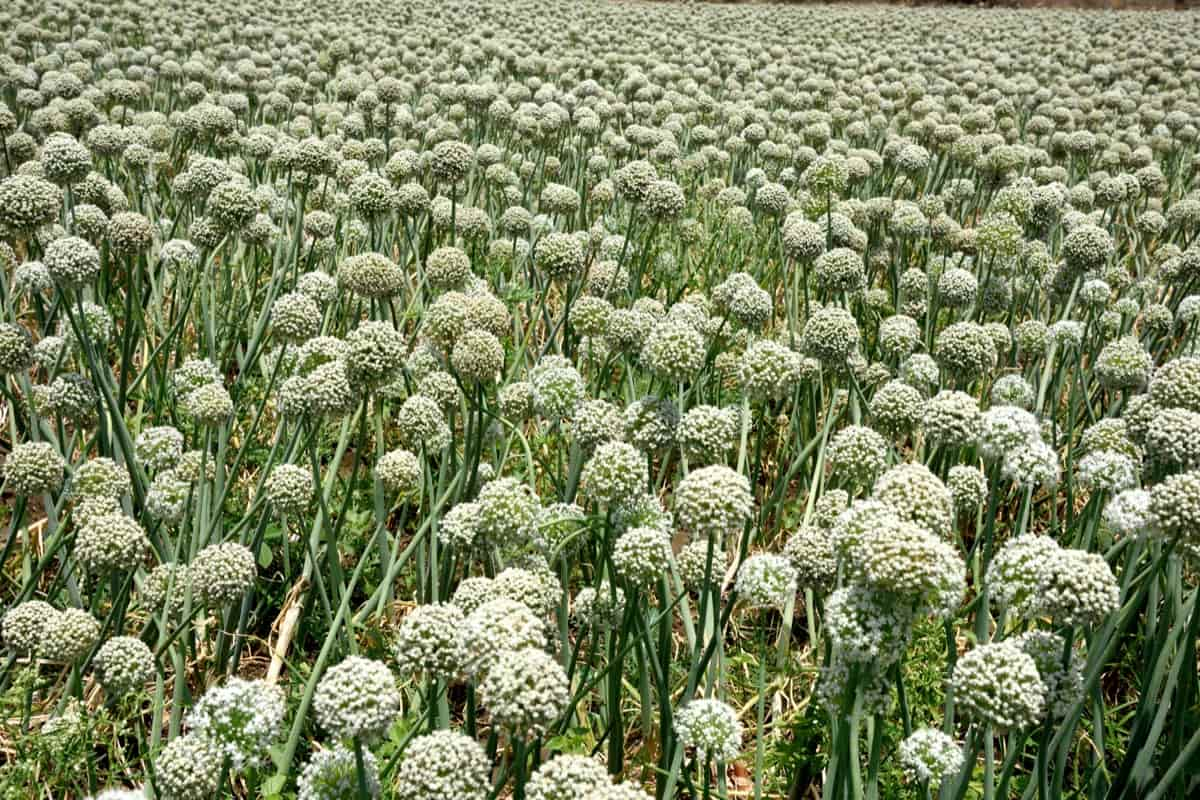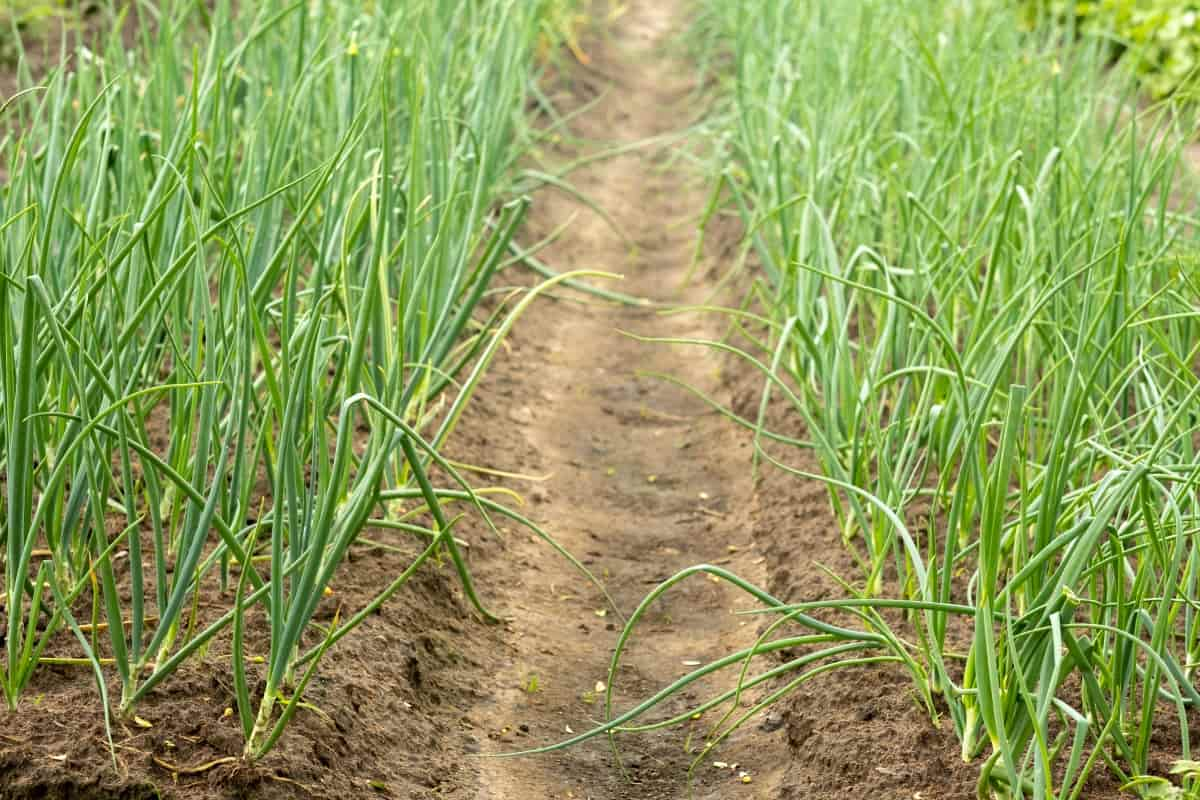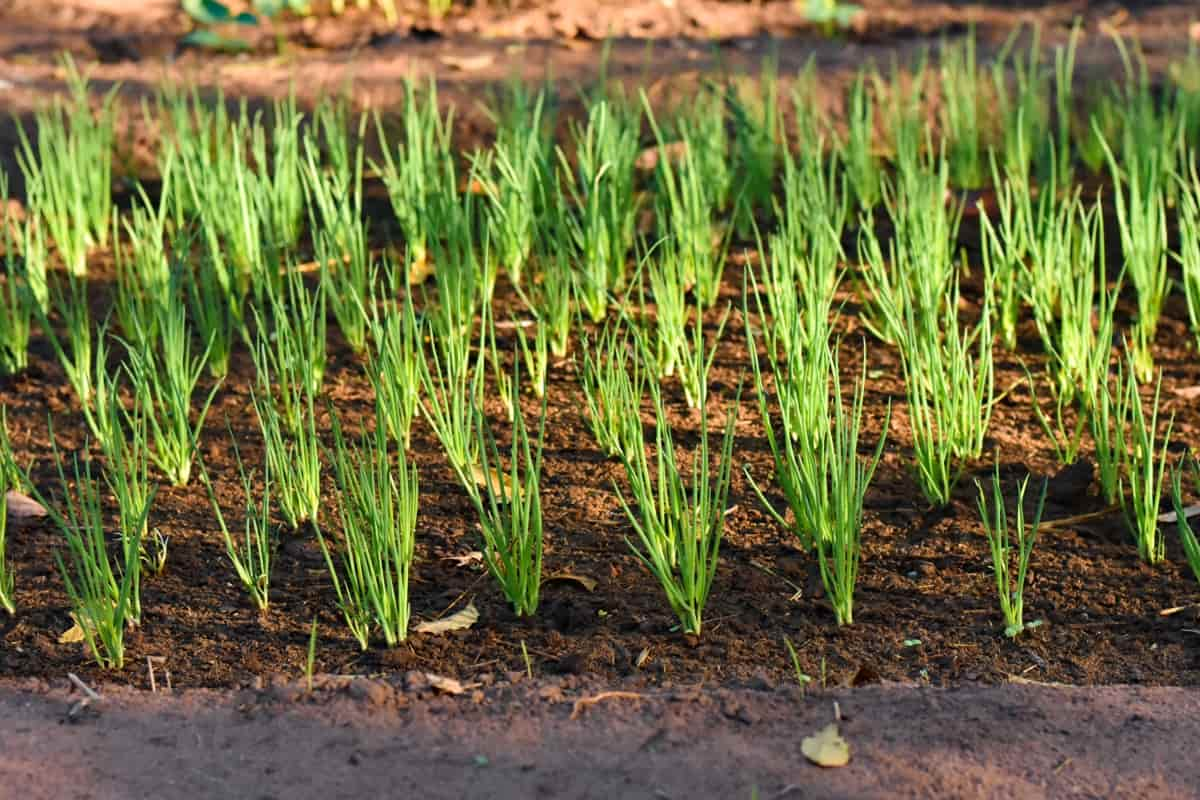Onions, alliums recognized for their culinary applications, encompass a fascinating sphere of agricultural science, particularly regarding their reproduction. The intrigue is in onion pollination type, where pollen moves from the male to the female flower part. The question, “What type of pollination is an onion?” gets complicated.

Onions predominantly rely on insects for pollination, but they can also be wind-pollinated under certain conditions. However, these natural methods can sometimes be unreliable, making manual intervention a key to maximizing yield. Hand pollination and various natural pollination techniques have thus emerged as significant factors in onion cultivation. Here we learn to pollinate onion flowers, helping you ensure a successful crop yield.
How to Pollinate Onion Flowers
Understanding the Anatomy of an Onion Flower for Effective Pollination
Before diving into pollination techniques, it’s crucial to understand the basic structure of an onion flower. An onion flower comprises six white or lavender tepals (petals and sepals that look similar), forming a star-shaped bloom. At the center, you’ll find six stamens (the male reproductive organ) holding pollen-filled anthers at the top.
The pistil, situated amidst the stamens, is the female part of the flower, consisting of a sticky stigma at the top where pollen lands and germinates, an ovary at the bottom and a style connecting the two. Understanding this anatomy is crucial for effective hand pollination.
Why and When to Pollinate Onion Flowers
The main purpose of pollinating onion flowers is to produce seeds for the next planting season. A well-pollinated flower yields a robust cluster of seeds, ensuring a high germination rate. Generally, onion flowers begin to open and become receptive to pollination in late spring or early summer. It’s essential to note that pollination should occur when the flowers are fully open and have a sticky, receptive stigma. A typical indication of this stage is the visibility of pollen on the anthers, making it the best time to intervene for pollination, whether naturally or manually.
Methods for Hand-Pollinating Onion Flowers
Hand-pollinating onion flowers can be a meticulous yet rewarding task. For this process, you’ll need a small, soft brush or a cotton swab. Gently touch the flower’s anthers with the brush to pick up the pollen and lightly dust it onto the stigma. Make sure to pollinate multiple flowers on the same plant to increase the chances of successful seed production. The process must be repeated every couple of days as new flowers open. Hand pollination requires patience and precision, but the reward is high-quality seed production.
Natural Pollination Techniques for Onion Flowers
Onions rely heavily on insects, particularly bees, for natural pollination. Encouraging bees to visit your onion plants can significantly improve pollination. This can be achieved by planting bee-attracting plants nearby, like lavender or marigold. Avoid using pesticides that may harm these beneficial insects. Providing a water source and habitats, such as insect hotels, can also help promote insect activity. In windier regions, natural wind pollination can also be effective. Positioning onion plants in the direction of prevailing winds can enhance the chances of successful wind pollination.
The Role of Insects in Pollinating Onion Flowers
Insects, particularly bees, play a vital role in onion flower pollination. Bees move from flower to flower, gathering nectar and pollen. As they move, pollen sticks to their bodies and gets transferred from the anthers of one flower to the stigma of another, facilitating cross-pollination. Cross-pollination often leads to a more robust gene pool and, thus, stronger onion plants. While bees are the primary pollinators, insects like flies and beetles also contribute to pollination.
In case you missed it: Fungal Diseases in Onion Plants: Treatment, Control Management, and Prevention

Tools and Equipment for Pollinating Onion Flowers
The tools required for onion flower pollination are simple and easily accessible. A small, soft brush, like a paintbrush, a makeup brush, or a cotton swab, is sufficient for hand pollination. These tools help collect and distribute the pollen gently without damaging the delicate parts of the flower. Investing in insect-attracting plants, houses, and water sources can be beneficial if you encourage natural pollination. Additionally, having a wind barrier (like a garden net) for windy days can prevent the loss of valuable pollen.
Tips for Successful Onion Flower Pollination
Ensure to identify the right time for pollination – when the flowers are fully open, and the stigma is sticky. Avoid harsh contact with the flower parts in hand pollination, as it can lead to damage. When promoting natural pollination, ensure your garden is insect-friendly and free from harmful pesticides. Regular observation of your onion plants will allow you to detect any early changes or issues. Also, remember that not all flowers may produce seeds, even with successful pollination.
Common Mistakes to Avoid When Pollinating Onion Flowers
Some common mistakes to avoid when pollinating onion flowers include pollinating too early or too late, roughly handling the flowers during hand pollination, or using harmful pesticides that deter beneficial insects. Another common mistake is not considering weather conditions. High winds or heavy rain can knock off pollen, hampering natural and hand pollination efforts. Therefore, pay attention to the weather forecast during the pollination period.
How to Increase Onion Yield Through Proper Flower Pollination
Proper flower pollination directly impacts onion yield. A well-pollinated flower produces more seeds, eventually producing more plants in the next season. To increase yield, focus on creating a conducive environment for pollination. This involves regular watering, providing ample sunlight, ensuring nutrient-rich soil, and creating an insect-friendly garden for natural pollination. Manual pollination should be conducted carefully, covering as many flowers as possible to ensure maximum seed production.
Incorporating Crop Rotation in Your Garden
Crop rotation is an essential practice that can support successful onion flower pollination and consequently enhance the onion yield. By alternating the types of crops in each area of your garden year after year, you can help maintain soil fertility and disrupt the life cycles of pests or diseases specific to certain plants. For example, following a heavy-feeding plant like onions with light-feeding plants like beans can help maintain soil nutrients. Furthermore, crop rotation can deter pests that prefer specific plants, reducing the risk of infestations that could harm your onions and disrupt pollination.
Maintaining Ideal Growing Conditions for Onions
Maintaining ideal conditions for onion growth can indirectly support successful pollination and a healthier yield. Onions generally prefer a location with full sunlight and well-drained, fertile soil. Regular watering is essential, but avoid water-logging the soil as it can lead to bulb rot.
In case you missed it: Homemade DIY Onion Spray for Pests and Diseases Control: Recipe for Natural and Organic Benefits of Plants

Adding organic compost to your onion beds can keep the soil nutrient-rich, supporting flower production and subsequent pollination. Regularly monitoring your plants’ health, promptly removing any diseased or damaged plants, and maintaining an overall clean garden environment can also support pollinator activity and successful onion flower pollination.
Conclusion
Understanding the importance and techniques of onion flower pollination can significantly enhance your yield and provide a more robust crop for the following season. Whether you’re opting for hand pollination or encouraging natural methods, following the above advice and avoiding common pitfalls will set you on the path to successful onion cultivation.
- Feed Your Flock for Less: Top 10 Tips to Save on Chicken Feed
- Ultimate Guide to Ossabaw Island Hog: Breeding, Raising, Diet, and Care
- Hatching Answers: The Top 10 Reasons Your Chickens Aren’t Laying Eggs
- Eggs and Economics: Breaking Down the Cost of Raising Backyard Chickens
- Defend Your Greens: Proven Methods to Keep Iguanas Out of Your Garden
- Ultimate Guide to Cinnamon Queen Chicken: A Comprehensive Guide for Beginners
- Ultimate Guide to California Tan Chicken: Breeding, Raising, Diet, Egg-Production and Care
- Ultimate Guide to Marsh Daisy Chicken: Breeding, Raising, Diet, and Care
- 10 Types of Chicken Farming Businesses You Can Start for Profits